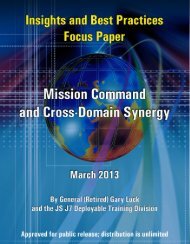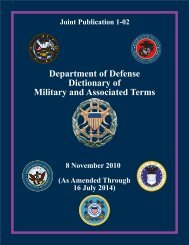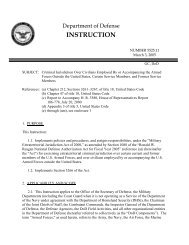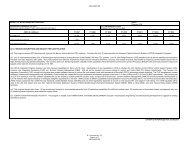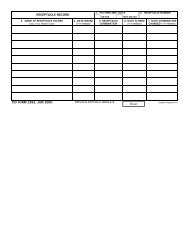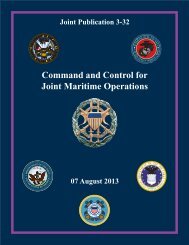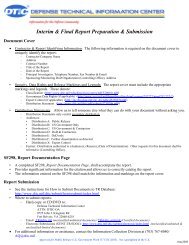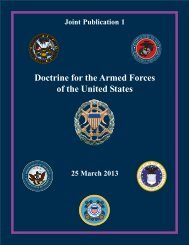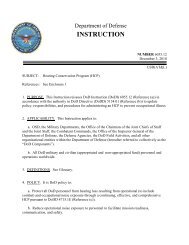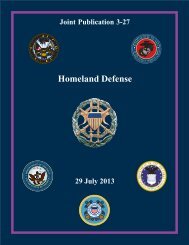JP 3-16, Multinational Operations - Defense Technical Information ...
JP 3-16, Multinational Operations - Defense Technical Information ...
JP 3-16, Multinational Operations - Defense Technical Information ...
Create successful ePaper yourself
Turn your PDF publications into a flip-book with our unique Google optimized e-Paper software.
Chapter III<br />
UNITED STATES CENTRAL COMMAND<br />
COALITION INTELLIGENCE CENTER<br />
“We were established in 2001 at the beginning of Operation ENDURING<br />
FREEDOM. Under J-2 [intelligence directorate of a joint staff] we were<br />
established for the purpose of facilitating and sharing of intelligence. In the<br />
beginning there was some operational tactical intelligence that we shared<br />
with our coalition members and that information was limited to just<br />
Afghanistan. But as the mission expanded into Iraq, we also had to expand<br />
our purpose of sharing and discussing information while establishing<br />
analytical teams to address specific questions from both the Coalition and<br />
the US. Our Center is the forum where most of those discussions take place.<br />
The Coalition countries are all invited to have membership in the Intelligence<br />
Center. We put in perspective the nation’s involvement with operations. Not<br />
every country has an intelligence interest and not every country has an<br />
intelligence officer assigned to US Central Command (USCENTCOM). Those<br />
that do have an intelligence officer assigned at USCENTCOM will participate<br />
with us on a daily basis. Those that do not have an intelligence officer, but<br />
do have intelligence interests, usually go through their country’s senior<br />
national representative or through the operations officer to consult with us<br />
and discuss with us issues of common interest.”<br />
Colonel Evilio Otero, Jr.<br />
Chief, Coalition Intelligence Center<br />
USCENTCOM Coalition Village<br />
management element is essential for planning and coordinating multinational collection<br />
operations.<br />
See <strong>JP</strong> 2-0, Joint Intelligence, for further details. Additional guidance on intelligence<br />
operations in multinational operations can be found in <strong>JP</strong> 2-01, Joint and National<br />
Intelligence Support to Military <strong>Operations</strong>.<br />
d. Geospatial Intelligence Geodetic Datums. <strong>Multinational</strong> operations require<br />
interoperable geodetic data, applications, and data exchange capabilities. Whenever<br />
possible, participants should agree to work on standard vertical and horizontal datums that<br />
allow products to have common datum reference points. A multinational geodetic reference<br />
plan should be developed and used to coordinate all products for use by member forces,<br />
including access approval procedures and blending assets into a cohesive production<br />
program.<br />
See <strong>JP</strong> 2-03, Geospatial Intelligence Support to Joint <strong>Operations</strong>, for further details.<br />
e. Biometrics. Biometrics is the process of recognizing an individual based on<br />
measurable anatomical, physiological, and behavioral characteristics. MNFs are employing<br />
biometrics in operations with increasing frequency and improving results to identify known<br />
threats, disrupt adversary freedom of movement within the populace, link people to events,<br />
and verify local and third-country nationals accessing MNF bases and facilities. The ability<br />
III-<strong>16</strong> <strong>JP</strong> 3-<strong>16</strong>



